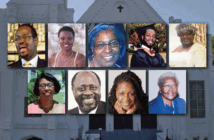Gil Rendle says all institutions eventually gravitate from serving their stated purposes to satisfying powerful institutional constituencies. The current deep mistrust of the institutional church is fueled by the fact that we focus more on our own people, clergy, resources, and rules than on our true, lifegiving mission. Trust can only be restored when leaders have the courage and capacity to help our churches do what we were created to do.
One reason for the current disrespect and mistrust of the institutional church can be seen in the distinction that Robert Quinn (Deep Change, 1999) makes between an organization’s public mission and its private mission. Quinn notes that an organization’s public mission is what it announces to the world as its purpose. For example, the public mission of a school system is some version of the claim that it exists for the education and preparation of children for the future.
However, over time all organizations and institutions quite naturally develop an internal private mission, which is defined as the satisfaction of the most powerful of the constituencies connected to the organization. Using the example of a school system again, the private mission leads school boards to make decisions that will focus on satisfying their most powerful constituencies: teachers, parents, state and federal mandates, and local community groups. In time this private mission of a school can easily overshadow the interests and needs of the students.
Like all institutions, churches have gravitated toward satisfying their own constituencies.
Over time, all established institutions naturally gravitate toward their private mission of constituency satisfaction. This is not a nefarious choice. Rather it is the natural and constant growing reorientation that happens over time requiring leaders to attend to the internal needs of the organization and the people who work in it. Under another name it is also known as “mission creep,” in which the attention of leaders is diverted from their intended purpose.
For example, well-established mature institutions like Mainline Protestant denominations continue to announce their public mission — such as United Methodism’s “we make disciples of Jesus Christ for the transformation of the world.” This is an outward-focused mission statement to bring healthy and healing change to both individuals and communities as the target of Christian mission.
But, beginning with the decline of membership and resources in the mid-1960s, the anxiety-fueled, private mission of institutional survival took over with attention shifting to the strongest internal constituencies: the security of clergy as a professional group, efforts of congregational development to increase the flow of resources of people and dollars to support established buildings and programs, the fulfillment of the letter-of-the-law of institutional management as outlined by books of polity.
Focusing on a private mission fuels mistrust.
From inside the institutional organization, this attention to the constituencies of clergy, congregations, and denominational law felt like the fulfillment of fiduciary responsibility — good leadership. From outside of the institutional organization, people intuited that the church announced one thing about its purpose (its public mission) but then focused its attention inwardly on its own clergy, lay leaders, resources, and rules (its private mission). It became another reason for mistrust.
Leaders must refocus attention on the church’s true mission to restore trust.
Recovering trust will take the deep and quiet courage of our leaders who have become habituated to rewards from the strong constituencies within their own organization who want to be satisfied and secure. Leaders will need to realign their attention and resources to their public mission — a shift that will not be highly regarded by the internal constituencies that seek attention and resources to assuage their own anxiety.
Trust is built by both the leaders of the organizations and the organizations themselves when they are able to earn positive responses to two essential questions:
1. Does the organization actually do what it says it will do? This is simply the question of the public mission and the why of the institutional organization. Does the organization know its why? In many cases the leaders of our institutional organizations will need to go back and recover and restore the public mission. But to do what one says one will do is an essential act central to inviting trust from others.
2. Do the leaders have the courage and capacity to do what they say they will do? It is necessary first to reclaim and recommit to the public mission. But in many cases, to take long established institutional organizations back to their public mission means to steer away from imbedded practices and the rewards given by the constituencies who shape the private mission. Leadership is always a tenuous act because it requires and depends upon followers, but followers can always revolt or leave if not satisfied. It takes courage — quiet courage — for leaders to hold up purpose continuously and clearly in their organization and to invite others to step forward to serve purpose even when it is against their own security, satisfaction, and self-interest. But this is the element of courage and capacity that is at the heart of trust. Purpose — the public mission of the institution, its “why” — does not live on lip-service. Once courage and capacity are evident, people will once again risk trust.
Institutions are necessary and needed. We depend on them to shape our own individual lives and to shape our communities. Without strong, trustworthy institutions, we will strain unsuccessfully to reorient ourselves away from the current overexpression of self, individual liberties, and personal truth. Churches, like other institutions of morality, require us and give us the means to serve something greater than ourselves. But a countercultural institution must clearly understand its own why — the very treasure that it holds.
 From Countercultural: Subversive Resistance and the Neighborhood Congregation (Alban Books/Rowman & Littlefield, 2023). Used by permission. The book is available at Rowman & Littlefield, Cokesbury, and Amazon.
From Countercultural: Subversive Resistance and the Neighborhood Congregation (Alban Books/Rowman & Littlefield, 2023). Used by permission. The book is available at Rowman & Littlefield, Cokesbury, and Amazon.
Related Resources
- Discovering God’s Future for Your Church, a turnkey Lewis Center video tool kit resource
- Is Your Church Driven by a Shadow Mission? by Robert Schnase
- The Importance of Why by Graham Standish
Dial graphic by juicy_fish on Freepik







